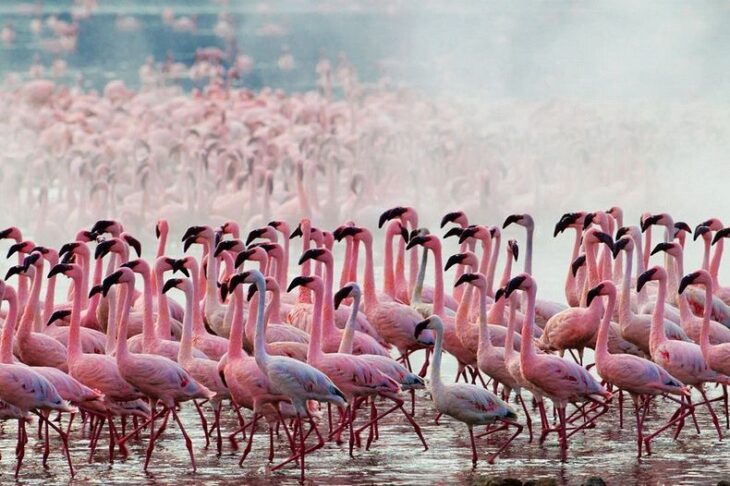NAKURU, Kenya, Aug, 24 – The rising water levels at Lake Nakuru and habitat degradation have resulted in migration of various species of birds from the world famous park affecting the tourism sector in the county.
According to the deputy park warden Caroline Mwebia, the climate change, destruction of the lake’s catchment by human activities, pollution and predation have emerged as the biggest threats to endangered birds’ existence and their nesting sites.
Species threatened with extinction at Lake Nakuru National Park and bird sanctuary include Lesser and Greater flamingoes, Gray Crowned-Crane, White-barked Vulture and Ruppell’s Griffon.
Other birds that are now considered vulnerable include Abyssinian Thrush, White-headed Vulture, Lappet-faced Vulture, Greater Spotted Eagle and Imperial Eagle.
Maccoa Duck, Lesser Flamingo, Black-tailed Godwit, Great Snipe, Bateleur, Crowned Eagle, Pallid Harrier, European Roller, Sooty Falcon and Gray-crested Helmet shrike have also been classified as near threatened species.
“The challenges facing the birds have been aggravated by fluctuation of lake water levels,” said Mwebia.
In a media briefing, Mwebia observed that increased inflow of fresh water into the lake had altered its alkalinity which has in turn reduced volumes of algae that flamingoes and other migratory birds feed on resulting in migrations of the birds to Lake Natron in Tanzania to breed.
The deputy park warden indicated that migration of flamingos both greater and lesser from Lake Natron to Lake Nakuru and other saline Lakes such as Bogoria and Elementaita peaks from April to June.
She added that the unpredictable weather patterns affects the migration of flamingos from Tanzania to Kenya saying that curbing lake pollution and educating the people around will help in protecting the migratory birds.
Nearly a quarter of a million visitors visit the park annually according to records from the Kenya Wildlife Service (KWS).
Flamingos get their pink color from eating insect larvae and algae. High water levels shrink the birds’ ideal situation for breeding and feeding.
When water levels started rising, she said, flamingos left for nearby lakes like Bogoria and Baringo whose waters were less deep.
Mwebia noted that the area around the lake is largely depend on tourism for employment and revenue.
The flamingos are so popular among locals and tourists, while the street leading up to the park is decorated with flamingo-shaped lampposts.
Want to send us a story? Contact Shahidi News Tel: +254115512797 (Mobile & WhatsApp)


